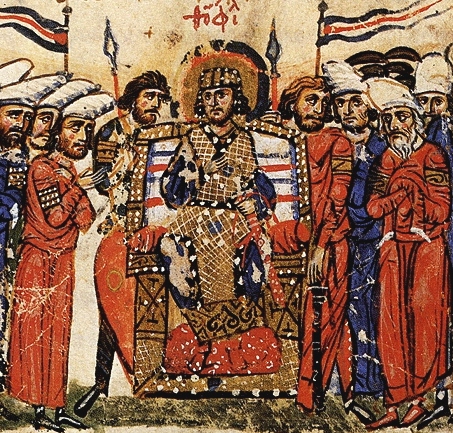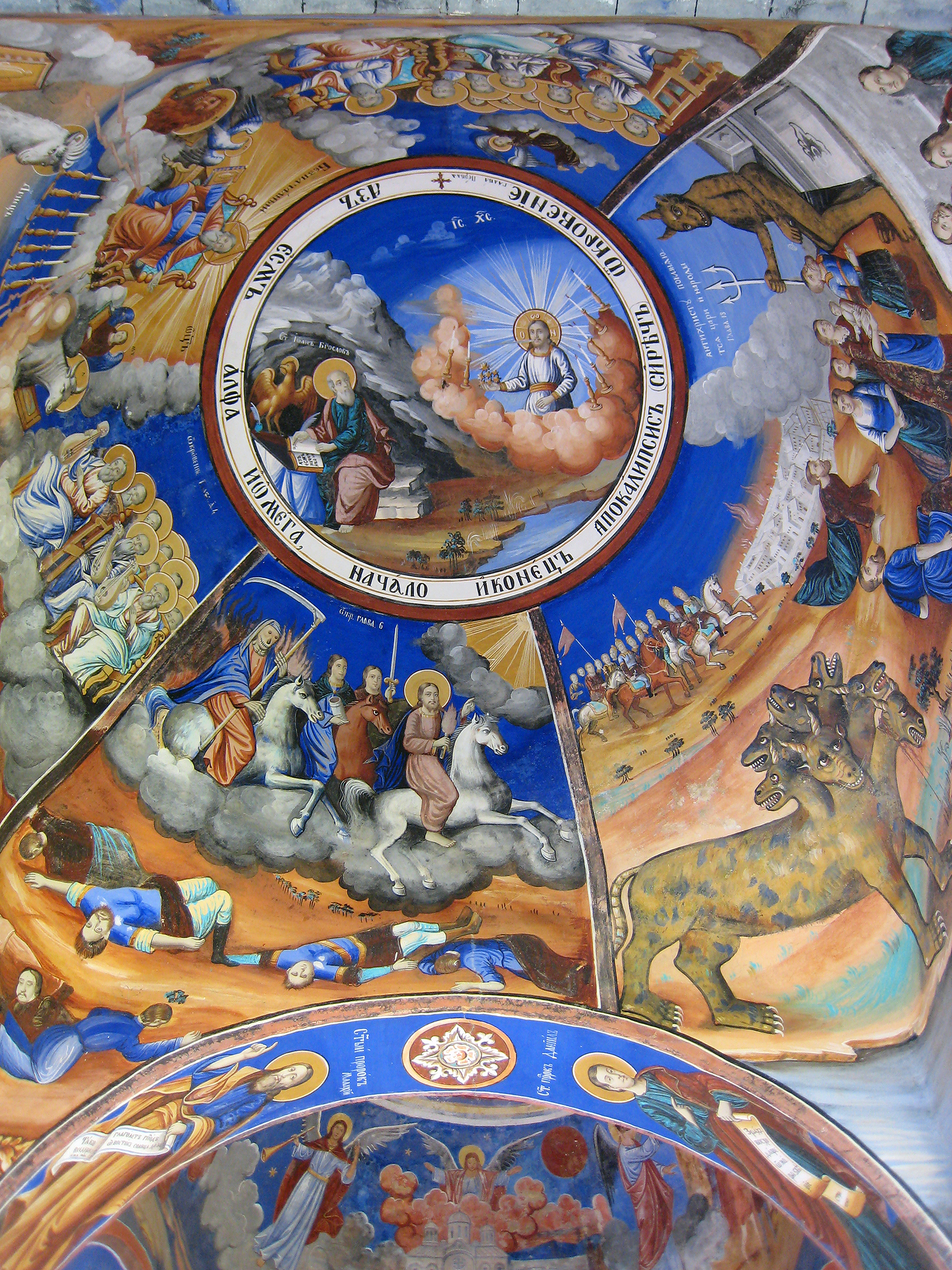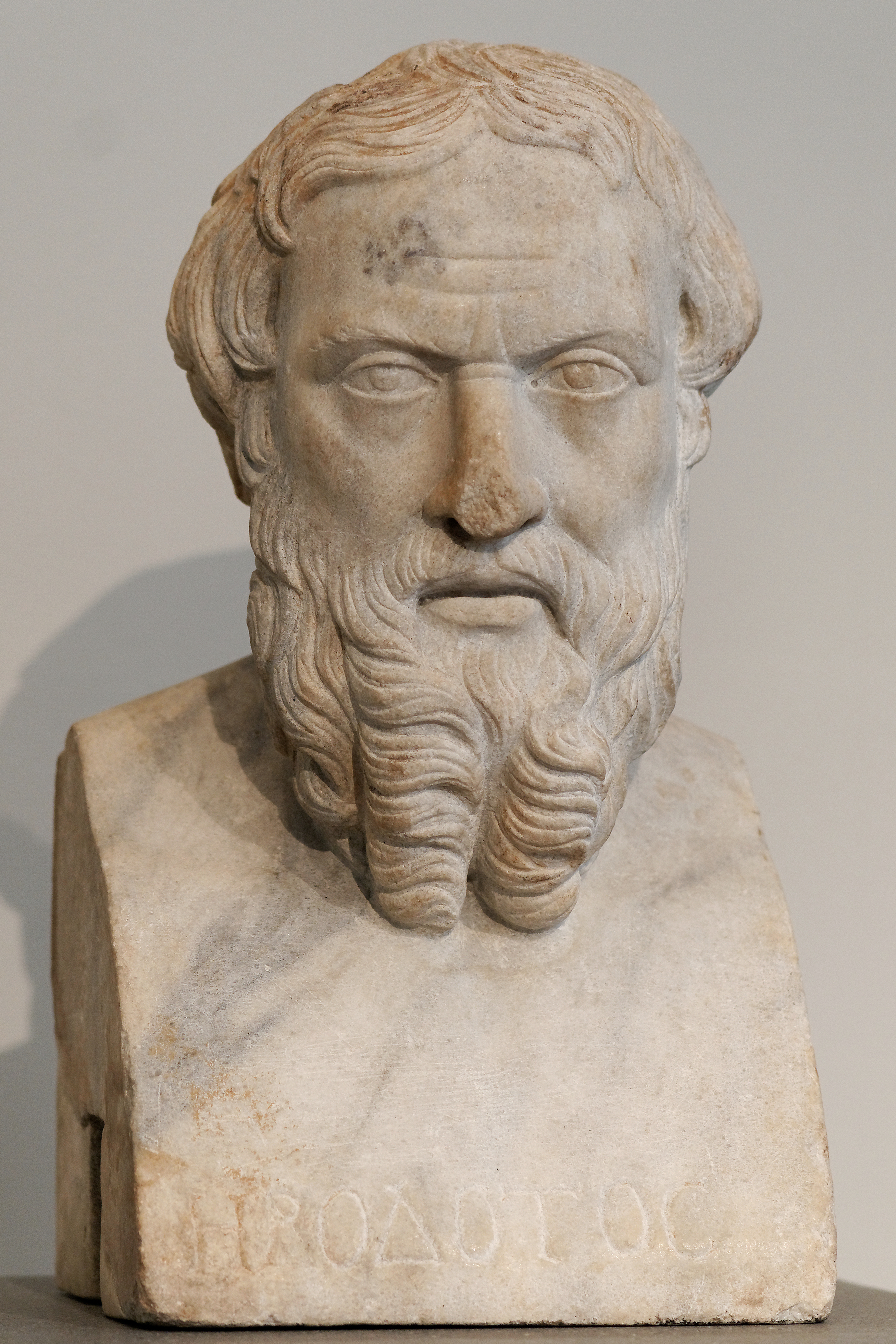|
Gog And Magog
Gog and Magog (; ) or Ya'juj and Ma'juj () are a pair of names that appear in the Bible and the Quran, Qur'an, variously ascribed to individuals, tribes, or lands. In Ezekiel 38, Gog is an individual and Magog is his land. By the time of the New Testament's Revelation 20 (), Jewish tradition had come to view Ezekiel's "Gog ''from'' Magog" as "Gog ''and'' Magog". The Gog prophecy is meant to be fulfilled at the approach of what is called the "Eschatology, end of days", but not necessarily the end of the world. Jewish eschatology viewed Gog and Magog as enemies to be defeated by the Messiah in Judaism, Messiah, which would usher in the age of the Messiah. One view within Christianity is more starkly Apocalypse, apocalyptic, making Gog and Magog allies of Satan against God at the end of the Millennialism, millennium, as described in the Book of Revelation. A legend was attached to Gog and Magog by the time of the Pax Romana, Roman period, that the Gates of Alexander were erected by ... [...More Info...] [...Related Items...] OR: [Wikipedia] [Google] [Baidu] |
Gogmagog (giant)
Gogmagog (also ''Goemagot'', ''Goemagog'', ''Goëmagot'' and ''Gogmagoc'') was a legendary Giant (mythology), giant in the Matter of Britain. According to Geoffrey of Monmouth's ''Historia Regum Britanniae'' ("The History of The Kings of Britain", 12th century), he was a giant inhabitant of Cornwall, who was thrown off a cliff during a wrestling match with Corineus (the legendary namesake of Cornwall, and companion of Brutus of Troy). Later tradition expanded on this story, with Gogmagog described as a descendant of Albion#Anglo-Norman Albina story, Albina, and the chieftain and largest of the giants found by Brutus and his men inhabiting the land of Albion. The effigies of Gogmagog and Corineus, used in English pageantry and later instituted as guardian statues at Guildhall, London, Guildhall in London eventually earned the familiar names "Gog and Magog". Etymology The name "Gogmagog" is commonly derived from the biblical characters Gog and Magog; however, Peter Roberts (priest), ... [...More Info...] [...Related Items...] OR: [Wikipedia] [Google] [Baidu] |
Apocalypse
Apocalypse () is a literary genre originating in Judaism in the centuries following the Babylonian exile (597–587 BCE) but persisting in Christianity and Islam. In apocalypse, a supernatural being reveals cosmic mysteries or the future to a human intermediary. The means of mediation include dreams, visions and heavenly journeys, and they typically feature symbolic imagery drawn from the Jewish Bible, cosmological and (pessimistic) historical surveys, the division of time into periods, esoteric numerology, and claims of ecstasy and inspiration. Almost all are written under pseudonyms (false names), claiming as author a venerated hero from previous centuries, as with the Book of Daniel, composed during the 2nd century BCE but bearing the name of the legendary Daniel from the 6th century BCE. Eschatology (from Greek ''eschatos'', last) concerns expectations of the end of the present age. Thus, apocalyptic eschatology is the application of the apocalyptic world-view to the e ... [...More Info...] [...Related Items...] OR: [Wikipedia] [Google] [Baidu] |
Huns
The Huns were a nomadic people who lived in Central Asia, the Caucasus, and Eastern Europe between the 4th and 6th centuries AD. According to European tradition, they were first reported living east of the Volga River, in an area that was part of Scythia at the time. By 370 AD, the Huns had arrived on the Volga, causing the westwards movement of Goths and Alans. By 430, they had established a vast, but short-lived, empire on the Danubian frontier of the Roman empire in Europe. Either under Hunnic hegemony, or fleeing from it, several central and eastern European peoples established kingdoms in the region, including not only Goths and Alans, but also Vandals, Gepids, Heruli, Suebians and Rugians. The Huns, especially under their King Attila, made frequent and devastating raids into the Eastern Roman Empire. In 451, they invaded the Western Roman province of Gaul, where they fought a combined army of Romans and Visigoths at the Battle of the Catalaunian Fields, and in 452, they ... [...More Info...] [...Related Items...] OR: [Wikipedia] [Google] [Baidu] |
Vikings
Vikings were seafaring people originally from Scandinavia (present-day Denmark, Norway, and Sweden), who from the late 8th to the late 11th centuries raided, pirated, traded, and settled throughout parts of Europe.Roesdahl, pp. 9–22. They also voyaged as far as the Mediterranean Sea, Mediterranean, North Africa, the Middle East, Greenland, and Vinland (present-day Newfoundland in Canada, North America). In their countries of origin, and some of the countries they raided and settled in, this period is popularly known as the Viking Age, and the term "Viking" also commonly includes the inhabitants of the Scandinavian homelands as a whole. The Vikings had a profound impact on the Early Middle Ages, early medieval history of Northern Europe, northern and Eastern Europe, including the political and social development of England (and the English language) and parts of France, and established the embryo of Russia in Kievan Rus'. Expert sailors and navigators of their cha ... [...More Info...] [...Related Items...] OR: [Wikipedia] [Google] [Baidu] |
Middle Ages
In the history of Europe, the Middle Ages or medieval period lasted approximately from the 5th to the late 15th centuries, similarly to the post-classical period of global history. It began with the fall of the Western Roman Empire and transitioned into the Renaissance and the Age of Discovery. The Middle Ages is the middle period of the three traditional divisions of Western history: classical antiquity, the medieval period, and the modern period. The medieval period is itself subdivided into the Early, High, and Late Middle Ages. Population decline, counterurbanisation, the collapse of centralised authority, invasions, and mass migrations of tribes, which had begun in late antiquity, continued into the Early Middle Ages. The large-scale movements of the Migration Period, including various Germanic peoples, formed new kingdoms in what remained of the Western Roman Empire. In the 7th century, North Africa and the Middle East—once part of the Byzantine Empire� ... [...More Info...] [...Related Items...] OR: [Wikipedia] [Google] [Baidu] |
Scythians
The Scythians ( or ) or Scyths (, but note Scytho- () in composition) and sometimes also referred to as the Pontic Scythians, were an Ancient Iranian peoples, ancient Eastern Iranian languages, Eastern Iranian peoples, Iranian Eurasian nomads, equestrian nomadic people who had migrated during the 9th to 8th centuries BC from Central Asia to the Pontic Steppe in modern-day Ukraine and Southern Russia, where they remained established from the 7th century BC until the 3rd century BC. Skilled in Horses in warfare, mounted warfare, the Scythians replaced the Agathyrsi and the Cimmerians as the dominant power on the western Eurasian Steppe in the 8th century BC. In the 7th century BC, the Scythians crossed the Caucasus Mountains and frequently raided West Asia along with the Cimmerians. After being expelled from West Asia by the Medes, the Scythians retreated back into the Pontic Steppe in the 6th century BC, and were later conquered by the Sarmatians in the 3rd to 2nd centuries ... [...More Info...] [...Related Items...] OR: [Wikipedia] [Google] [Baidu] |
Book Of Genesis
The Book of Genesis (from Greek language, Greek ; ; ) is the first book of the Hebrew Bible and the Christian Old Testament. Its Hebrew name is the same as its incipit, first word, (In the beginning (phrase), 'In the beginning'). Genesis purports to be an account of the Genesis creation narrative, creation of the world, the early history of humanity, and the Jews#Origins, origins of the Jewish people. In Judaism, the theological importance of Genesis centers on the covenants linking God in Judaism, God to his chosen people and the people to the Promised Land. Genesis is part of the Torah or Pentateuch, the first five books of the Bible. Tradition credits Moses as the Torah's author. However, there is scholarly consensus that the Book of Genesis was composed several centuries later, after the Babylonian captivity, Babylonian Babylonian captivity, captivity, possibly in the fifth century BC. Based on the scientific interpretation of Archaeology, archaeological, Genetics, genetic, ... [...More Info...] [...Related Items...] OR: [Wikipedia] [Google] [Baidu] |
Japhetites
The term Japhetites (sometimes spelled Japhethites; in adjective form Japhetic or Japhethitic) refers to the descendants of Japheth, one of the three sons of Noah in the Book of Genesis. The term was used in ethnological and linguistic writings from the 18th to the 20th centuries as a Biblically derived racial classification for the European peoples, but is now considered obsolete. Medieval ethnographers believed that the world had been divided into three large-scale groupings, corresponding to the three classical continents: the Semitic peoples of Asia, the Hamitic peoples of Africa, and the Japhetic peoples of Europe. Javakhishvili, Ivane (1950), ''Historical-Ethnological problems of Georgia, the Caucasus and the Near East''. Tbilisi, pp. 130–135 (in Georgian). The term has been used in modern times as a designation in physical anthropology, ethnography, and comparative linguistics. In anthropology, it was used in a racial sense for White people (the Caucasian race). I ... [...More Info...] [...Related Items...] OR: [Wikipedia] [Google] [Baidu] |
Josephus
Flavius Josephus (; , ; ), born Yosef ben Mattityahu (), was a Roman–Jewish historian and military leader. Best known for writing '' The Jewish War'', he was born in Jerusalem—then part of the Roman province of Judea—to a father of priestly descent and a mother who claimed Hasmonean royal ancestry. He initially fought against the Roman Empire during the First Jewish–Roman War as general of the Jewish forces in Galilee, until surrendering in AD 67 to the Roman army led by military commander Vespasian after the six-week siege of Yodfat. Josephus claimed the Jewish messianic prophecies that initiated the First Jewish–Roman War made reference to Vespasian becoming Roman emperor. In response, Vespasian decided to keep him as a slave and presumably interpreter. After Vespasian became emperor in AD 69, he granted Josephus his freedom, at which time Josephus assumed the Emperor's family name of '' Flavius''. Flavius Josephus fully defected to the Roman s ... [...More Info...] [...Related Items...] OR: [Wikipedia] [Google] [Baidu] |
Alexander The Great
Alexander III of Macedon (; 20/21 July 356 BC – 10/11 June 323 BC), most commonly known as Alexander the Great, was a king of the Ancient Greece, ancient Greek kingdom of Macedonia (ancient kingdom), Macedon. He succeeded his father Philip II of Macedon, Philip II to the throne in 336 BC at the age of 20 and spent most of his ruling years conducting Wars of Alexander the Great, a lengthy military campaign throughout West Asia, Western Asia, Central Asia, parts of South Asia, and ancient Egypt, Egypt. By the age of 30, he had created one of the List of largest empires, largest empires in history, stretching from History of Greece, Greece to northwestern History of India, India. He was undefeated in battle and is widely considered to be one of history's greatest and most successful military commanders. Until the age of 16, Alexander was tutored by Aristotle. In 335 BC, shortly after his assumption of kingship over Macedon, he Alexander's Balkan campaign, campaigned in the Bal ... [...More Info...] [...Related Items...] OR: [Wikipedia] [Google] [Baidu] |
Gates Of Alexander
The Gates of Alexander, also known as the Caspian Gates, are one of several mountain passes in eastern Anatolia, the Caucasus, and Persia, often imagined as an actual fortification, or as a symbolic boundary separating the civilized from the uncivilized world. The original Gates of Alexander were just south of the Caspian Sea, at Rhagae, where Alexander crossed while pursuing Darius III. The name was transferred to passes through the Caucasus, on the other side of the Caspian, by the more fanciful historians of Alexander. Various other passes in the Caucasus and Anatolia have been called the Gates of Alexander since at least the 1st century CE. Later, the Caspian Gates were also identified with the Pass of Derbent (in modern Dagestan) on the Caspian; or with the Pass of Dariel, a gorge forming a pass between Georgia and North Ossetia–Alania. Tradition also connects it to the Great Wall of Gorgan (Red Snake) on its south-eastern shore. These fortifications were historically ... [...More Info...] [...Related Items...] OR: [Wikipedia] [Google] [Baidu] |
Pax Romana
The (Latin for ) is a roughly 200-year-long period of Roman history that is identified as a golden age of increased and sustained Roman imperialism, relative peace and order, prosperous stability, hegemonic power, and regional expansion, although the period also featured a number of revolts and wars, including the Roman-Persian wars. Traditionally, the onset is understood to be the ascent of Augustus, who also founded the Roman principate, in 27 BCE. Conversely, the end of the era is considered as 180 CE with the death of Marcus Aurelius, the last of the "Five Good Emperors". During this approximately two century period, the Roman Empire achieved its greatest territorial extent in CE 117 (Emperor Trajan). Also, the empire had a peak population of 70 million people, accounting for 33% of the world's population. According to Cassius Dio, the dictatorial reign of Commodus, later followed by the Year of the Five Emperors and the Crisis of the Third Century, marked the des ... [...More Info...] [...Related Items...] OR: [Wikipedia] [Google] [Baidu] |











